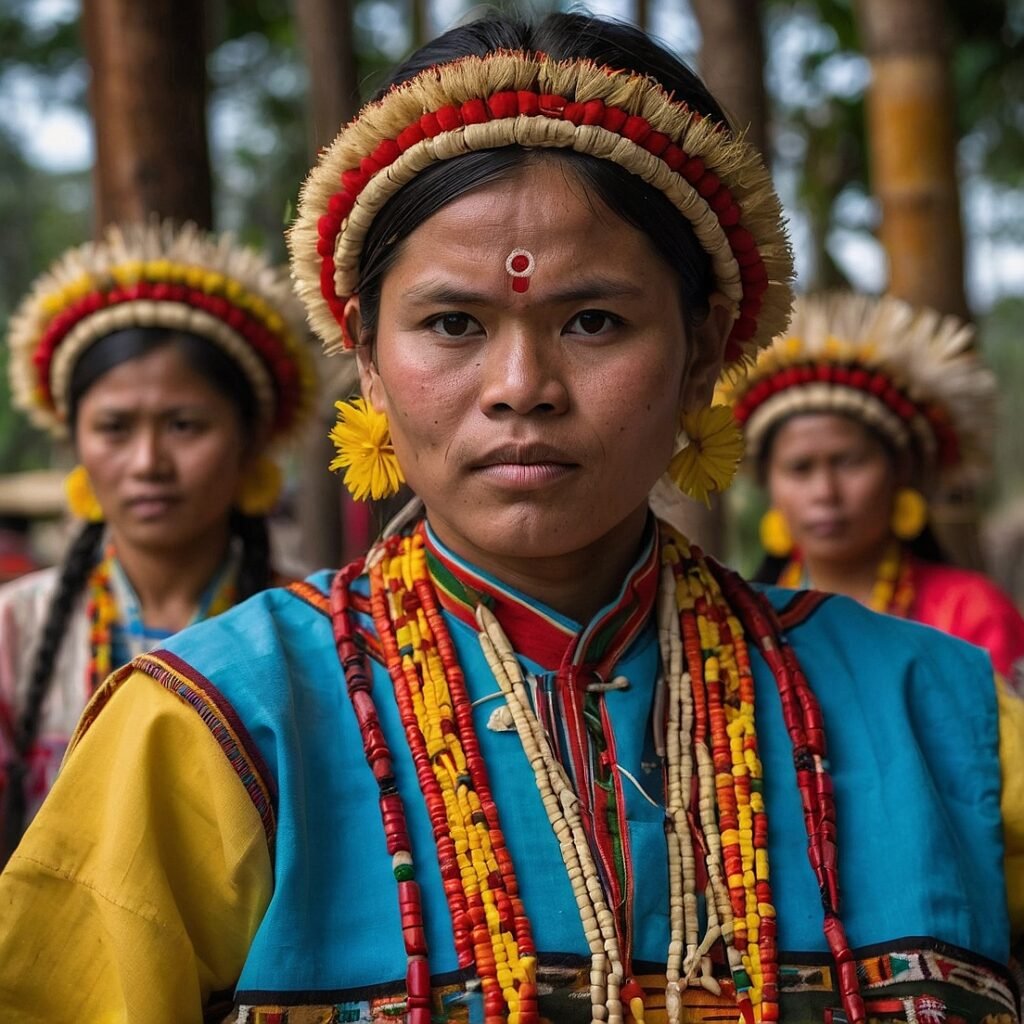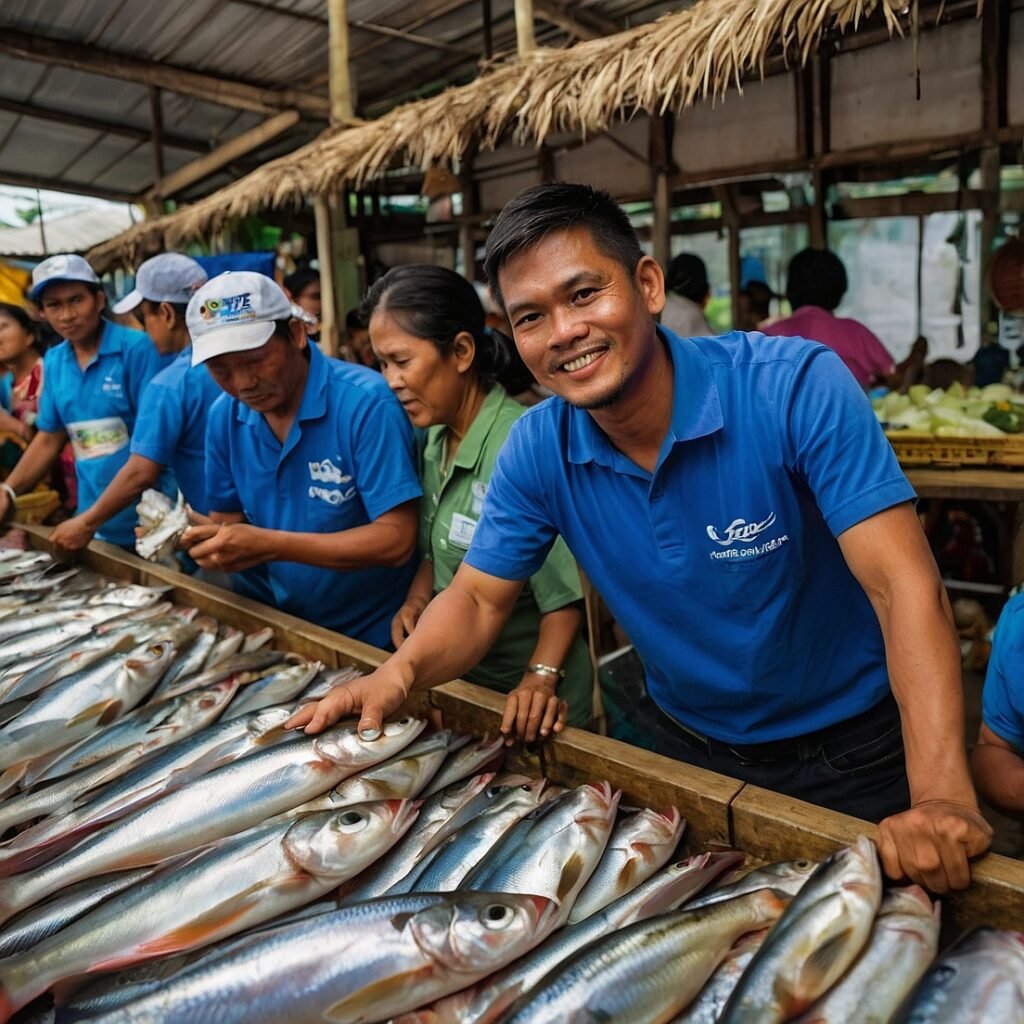Have you ever wondered what it would be like to step into a vibrant world where ancient traditions come alive, and the spirit of indigenous cultures dances in the air? Well, let me introduce you to the Kaamulan Festival, a dazzling celebration that takes place in the heart of Bukidnon, Philippines. This isn’t just any ordinary festival – it’s a colorful tapestry woven with the threads of seven indigenous tribes, each bringing their unique flavors to create an unforgettable experience. As we dive into the rich history and exciting events of Kaamulan, get ready to be transported to a world where tradition and modernity blend seamlessly, creating a cultural extravaganza that will leave you in awe. So, grab a cup of your favorite brew, sit back, and let’s embark on this fascinating journey through one of the Philippines’ most authentic and captivating festivals!
The Origins: Tracing the Roots of Kaamulan
A Glimpse into History
The Kaamulan Festival isn’t just a recent invention to attract tourists – its roots run deep into the soil of Bukidnon’s history. The word “Kaamulan” itself comes from the Binukid word “amul,” which means “to gather.” And gather they did! This festival originated as a way for the seven indigenous tribes of Bukidnon to come together, celebrate their shared heritage, and strengthen their bonds. These tribes – the Bukidnon, Higaonon, Talaandig, Manobo, Matigsalug, Tigwahanon, and Umayamnon – each bring their unique customs, rituals, and traditions to the festival, creating a rich tapestry of cultural diversity.
From Tribal Gatherings to Grand Celebration
What started as small, intimate tribal gatherings has evolved into a grand, province-wide celebration that draws visitors from all over the Philippines and beyond. The first official Kaamulan Festival was held in 1974, marking the beginning of an annual tradition that would grow to become Bukidnon’s pride and joy. Over the years, the festival has expanded its scope, incorporating more elements of indigenous culture while also embracing modern aspects of celebration. Today, Kaamulan stands as a testament to the resilience and vibrancy of Bukidnon’s indigenous communities, showcasing their ability to preserve their heritage while adapting to the changing times.
The Seven Tribes: A Cultural Mosaic
Meet the Hosts of Kaamulan
At the heart of the Kaamulan Festival are the seven indigenous tribes of Bukidnon. Each tribe brings its own unique flavor to the celebration, contributing to the rich cultural mosaic that makes Kaamulan so special. Let’s take a closer look at these tribes and what makes them unique:
- Bukidnon: Known for their intricate weaving and basketry, the Bukidnon tribe is often considered the namesake of the province.
- Higaonon: Masters of traditional healing practices, the Higaonon are known for their deep connection to nature.
- Talaandig: Famed for their artistic talents, particularly in music and visual arts, the Talaandig bring a creative flair to the festival.
- Manobo: With a rich oral tradition, the Manobo are keepers of ancient epics and folktales.
- Matigsalug: Skilled hunters and warriors, the Matigsalug are known for their bravery and strength.
- Tigwahanon: Experts in sustainable farming practices, the Tigwahanon have a deep respect for the land.
- Umayamnon: Known for their intricate beadwork and traditional crafts, the Umayamnon add vibrant colors to the festival.
Each tribe contributes its unique traditions, rituals, and artistry to the Kaamulan Festival, creating a truly diverse and enriching experience for all who attend.
Festival Highlights: A Feast for the Senses
Colorful Parades and Street Dancing
One of the most anticipated events of the Kaamulan Festival is the street dancing competition. Imagine the streets of Malaybalay City transformed into a moving canvas of colors, with dancers dressed in traditional tribal attire performing intricate choreographies that tell the stories of their ancestors. The rhythmic beat of indigenous instruments fills the air as the dancers move in perfect synchronization, their movements a physical representation of their tribe’s history and culture. It’s not just a performance – it’s a living, breathing expression of identity and pride.
Traditional Games and Sports
What’s a festival without some friendly competition? The Kaamulan Festival features a variety of traditional games and sports that showcase the skills valued by the indigenous communities. From archery contests that test precision and focus to strength competitions like tug-of-war, these events are not just about winning – they’re about honoring age-old traditions and fostering a sense of camaraderie among participants and spectators alike. Don’t be surprised if you find yourself cheering alongside locals for competitors you’ve just met!
Cultural Exhibits and Workshops
For those who want to dive deeper into the indigenous cultures of Bukidnon, the Kaamulan Festival offers a wealth of educational opportunities. Cultural exhibits showcase traditional arts and crafts, from intricate beadwork to hand-woven textiles. Interactive workshops allow visitors to try their hand at these ancient crafts, guided by skilled artisans who are eager to share their knowledge. It’s a hands-on way to connect with the region’s rich cultural heritage and maybe even take home a unique souvenir crafted by your own hands.
The Flavors of Kaamulan: A Culinary Adventure
Traditional Delicacies on Display
No festival is complete without food, and Kaamulan doesn’t disappoint in this department. The festival is a fantastic opportunity to explore the traditional cuisine of Bukidnon’s indigenous tribes. From hearty stews made with local ingredients to unique delicacies you won’t find anywhere else, the food at Kaamulan is a journey for your taste buds. Don’t miss the chance to try binaki, a sweet corn tamale wrapped in corn husks, or the savory tinuhog, skewered and grilled native chicken. And for the adventurous eaters, there’s even the chance to sample some of the more exotic dishes that have been part of tribal diets for generations.
Modern Twists on Ancient Recipes
While traditional dishes take center stage, the Kaamulan Festival also showcases how local chefs are putting modern twists on ancient recipes. This fusion of old and new creates exciting culinary experiences that bridge the gap between generations. You might find a gourmet version of a tribal staple or a traditional ingredient used in an unexpected way. It’s a delicious demonstration of how indigenous cuisines can evolve while still honoring their roots. Food lovers and cultural enthusiasts alike will find plenty to savor in the culinary offerings of Kaamulan.
Music and Arts: The Soul of Kaamulan
Traditional Instruments and Performances
The soundtrack of the Kaamulan Festival is a rich tapestry of indigenous sounds. Traditional instruments like the kulintang (a set of small gongs), agung (large gongs), and various types of flutes and drums create a mesmerizing backdrop to the festivities. Live performances showcase the musical heritage of each tribe, with skilled musicians demonstrating techniques passed down through generations. The haunting melodies and rhythmic beats do more than entertain – they tell stories, evoke emotions, and connect listeners to the spiritual world of Bukidnon’s indigenous peoples.
Contemporary Artists Inspired by Tradition
While traditional music plays a crucial role in Kaamulan, the festival also provides a platform for contemporary artists who draw inspiration from their indigenous roots. You’ll find modern bands incorporating tribal instruments into their sound, creating a unique fusion that appeals to younger generations while still honoring traditional melodies. Visual artists, too, showcase works that blend ancient motifs with contemporary styles, creating a bridge between past and present. This melding of old and new ensures that the artistic traditions of Bukidnon’s tribes remain relevant and vibrant in the modern world.
Economic Impact: Boosting Local Communities
Tourism and Local Businesses
The Kaamulan Festival isn’t just a cultural celebration – it’s also a significant economic driver for Bukidnon. Each year, the festival attracts thousands of visitors from across the Philippines and around the world, providing a substantial boost to the local tourism industry. Hotels, restaurants, and transportation services all benefit from the influx of visitors. But it’s not just about big businesses – small, local vendors and artisans also have the opportunity to showcase and sell their products, from traditional crafts to local delicacies. This economic activity helps to sustain local communities and provides incentives for younger generations to continue practicing traditional arts and crafts.
Preserving Heritage Through Economic Opportunities
One of the most important aspects of the Kaamulan Festival is how it creates economic opportunities that directly support the preservation of indigenous heritage. By providing a market for traditional crafts, foods, and performances, the festival incentivizes the continuation of these practices. Artisans who might otherwise struggle to make a living from their traditional skills find a ready market during Kaamulan. This economic benefit helps to ensure that valuable cultural knowledge and practices are passed down to future generations, preserving the rich heritage of Bukidnon’s indigenous communities.
Challenges and Conservation: Preserving Authenticity in a Changing World
Balancing Tradition and Tourism
As the Kaamulan Festival grows in popularity, one of the biggest challenges is maintaining its authenticity while catering to an increasing number of tourists. There’s a delicate balance between showcasing indigenous cultures and potentially commodifying them for tourist consumption. Festival organizers and tribal leaders work hard to ensure that the essence of Kaamulan remains true to its roots, focusing on education and cultural exchange rather than mere entertainment. This commitment to authenticity is what sets Kaamulan apart from many other cultural festivals and contributes to its enduring appeal.
Environmental Concerns and Sustainable Practices
Another important aspect of preserving the spirit of Kaamulan is addressing environmental concerns. The indigenous tribes of Bukidnon have a deep connection to the land, and this respect for nature is reflected in the festival’s approach to sustainability. Efforts are made to minimize waste, promote the use of eco-friendly materials, and educate visitors about the importance of environmental conservation. These initiatives not only help to protect the natural beauty of Bukidnon but also align with the traditional values of the indigenous communities, creating a festival that’s as environmentally conscious as it is culturally rich.
The Future of Kaamulan: Evolving While Honoring the Past
Embracing Technology
As we look to the future of the Kaamulan Festival, it’s clear that technology will play an increasingly important role. Digital platforms are being used to promote the festival to a global audience, while virtual reality experiences offer a way for people to engage with Bukidnon’s indigenous cultures from afar. However, the challenge lies in using these technologies in a way that enhances rather than replaces the physical experience of Kaamulan. The goal is to use modern tools to amplify the voices of indigenous communities and make their rich cultural heritage more accessible to a wider audience.
Empowering the Youth
The long-term sustainability of the Kaamulan Festival and the cultural traditions it represents depends on engaging and empowering the younger generation. Festival organizers are increasingly focusing on educational programs and workshops aimed at young people, teaching them about their heritage and the importance of preserving indigenous knowledge. By involving youth in the planning and execution of the festival, Kaamulan is nurturing a new generation of cultural ambassadors who will carry these traditions forward into the future.
Kaamulan by the Numbers: A Statistical Overview
To give you a clearer picture of the scale and impact of the Kaamulan Festival, let’s take a look at some key statistics:
| Year | Visitor Count | Economic Impact (PHP) | Participating Artisans | Street Dance Participants |
|---|---|---|---|---|
| 2017 | 100,000+ | 50 million | 200 | 500 |
| 2018 | 120,000+ | 60 million | 250 | 550 |
| 2019 | 150,000+ | 75 million | 300 | 600 |
| 2020 | 50,000* | 25 million* | 150* | 300* |
| 2021 | Virtual** | N/A | 100** | Virtual Performances |
*Note: 2020 figures were significantly impacted by the global pandemic.
**The 2021 festival was held virtually due to ongoing health concerns.
These numbers demonstrate the growing popularity and economic significance of the Kaamulan Festival, as well as its resilience in the face of challenges. The steady increase in visitor numbers and economic impact up until 2019 shows the festival’s potential for growth and its importance to the local economy. Even in the face of unprecedented challenges in 2020 and 2021, the festival adapted, showcasing the determination of the Bukidnon community to keep their cultural traditions alive.
Conclusion: The Enduring Spirit of Kaamulan
As we wrap up our journey through the vibrant world of the Kaamulan Festival, it’s clear that this celebration is much more than just a colorful event on the calendar. It’s a living, breathing testament to the resilience, creativity, and unity of Bukidnon’s indigenous communities. From its humble origins as a gathering of tribes to its current status as a nationally recognized cultural showcase, Kaamulan has evolved while staying true to its core purpose: honoring and preserving the rich heritage of Bukidnon’s seven indigenous tribes.
The festival’s ability to balance tradition with innovation, to create economic opportunities while safeguarding cultural authenticity, and to educate and inspire both locals and visitors alike is truly remarkable. As we look to the future, the Kaamulan Festival stands as a shining example of how indigenous cultures can thrive in the modern world, adapting to new challenges while holding firm to the values and traditions that define them.
Whether you’re a culture enthusiast, a food lover, an adventure seeker, or simply someone curious about the diversity of human experiences, the Kaamulan Festival offers something truly special. It’s an invitation to step into a world where ancient wisdom meets contemporary celebration, where every dance, every song, and every craft tells a story of survival, adaptation, and pride.
So, why not start planning your trip to Bukidnon for the next Kaamulan Festival? Come and experience the warmth of Bukidnon hospitality, the thrill of ancient traditions brought to life, and the joy of participating in a celebration that bridges past, present, and future. The Kaamulan Festival isn’t just an event – it’s an unforgettable journey into the heart of Philippine indigenous culture. See you there!
Disclaimer: The information presented in this blog post is accurate to the best of our knowledge as of April 2024. However, festival details, dates, and activities may change. Please check official sources for the most up-to-date information before planning your visit. If you notice any inaccuracies, please report them so we can correct them promptly.




